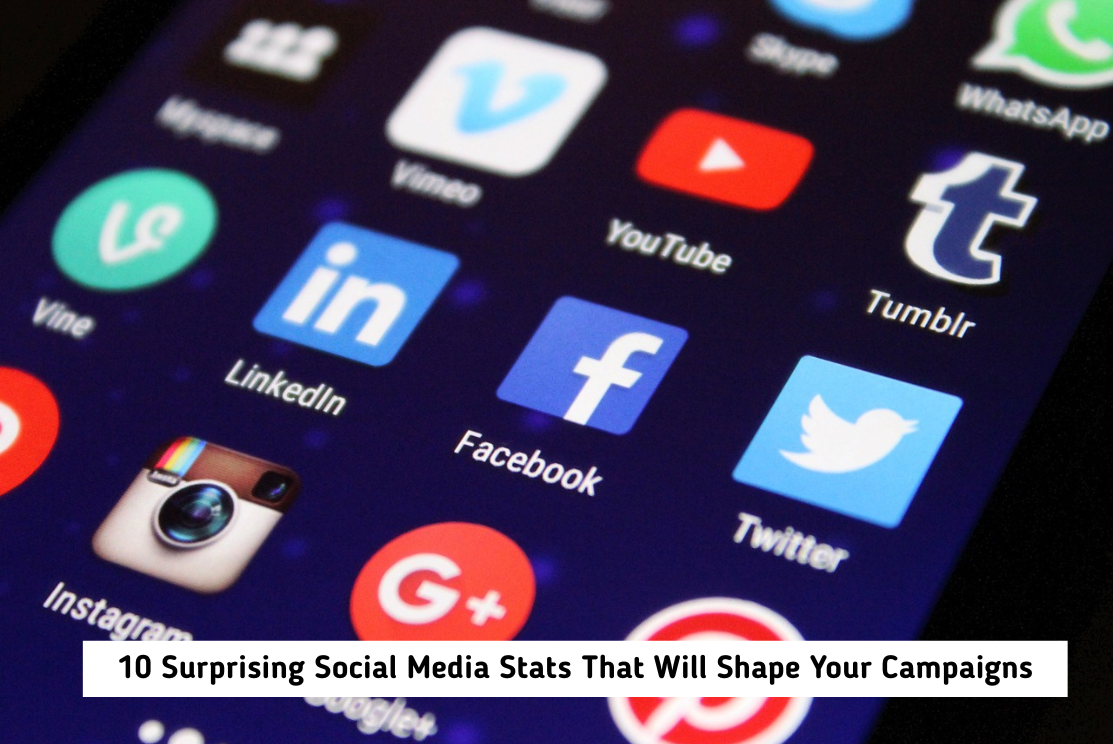More than half of the world’s population uses social media, which is also a crucial marketing tool for connecting, interacting, and influencing customers. There are a variety of features and interests on the various platforms, including communities on Facebook, visually striking videos on TikTok, and compelling images on Instagram and Pinterest. Social media platforms are used by almost every demographic to share material and learn about their interests.
Let’s examine some of the metrics that characterize social media and investigate the new trends that will influence the always-changing landscape in order to assist you in staying up-to-date with advances in this field.
1. The Use of Social Media Keeps Growing
A testament to each of those elements is the growing global usage of social media, which has taken the world by storm. There are currently more than five billion active social media users worldwide, according to We Are Social’s 2025 Global Overview Report. In contrast, there were just 415 million users worldwide in 2018, a remarkable increase. Global adoption may continue to increase as new platforms enter the digital sphere and as today’s digital natives continue to communicate, connect, and obtain information from social media sources.
2. Among All Age Categories, YouTube is the Most Widely Used Social Media Network
YouTube is the most popular social media network, according to Statista studies, regardless of whether you’re talking about Gen Zers, Baby Boomers, or anyone in between. To delve a bit further, the most widely used social media sites by age group are as follows:
- 18 to 29 years old: YouTube (93%), Instagram (76%), Facebook (68%), and Snapchat (65%).
- 30 to 49 years old: YouTube (94%), Facebook (78%), Instagram (66%), and Pinterest (43%).
- 50 to 64 years old: YouTube (86%), Facebook (70%), Instagram (36%), and LinkedIn (30%).
- 65+: YouTube (65%), Facebook (59%), Pinterest (22%), and Instagram (19%).
3. On Social Media, People Are Looking for Value
Providing your audience with consistent value for their time is one of the most crucial things you can do on social media. Your following may begin to decline if you produce one-size-fits-all sales content and your messaging is shallow.
The following social media habits lead users to unfollow brands, per Hootsuite’s Social Media Consumer Report:
- Spreading deceptive or empty content, including clickbait.
- Publishing extremely sensitive or political topics. Indeed, according to Edelman, 64% of customers will avoid a business that uses excessively strong language or takes a position that conflicts with their values.
- Not interacting with your audience and not answering their questions, comments, or messages.
Social media is a social space, so keep that in mind. To see your social media following grow, you must provide value to your audience, refrain from expressing personal ideas, and participate in discussions.

4. The Use of AI in Social Media Marketing Has Grown
As we’ve seen, social media use is increasing, and with it, so is the use of AI in social media. Statista reports that 14% of small-to-medium-sized firms (SMBs) utilize AI to support their social media marketing efforts, while 42% of marketers employ generative AI tools to help with social media copy development. Generative AI generation tools can increase your visibility across channels and expedite the production of social media content when used correctly. However, there is something you should be aware of.
5. Deepfakes on Social Media Are Starting to Worry People
Even though artificial intelligence is quickly permeating every aspect of the digital world, it’s important to remember that, according to Statista, 70% of social media users are worried about possibly dangerous or deceptive deepfakes created by AI.
For good reason, more and more marketers are using generative AI to help with their content creation, but it’s crucial to use AI tools sensibly in the interim. Be aware that AI tools can play a constructive role in social media strategy and content generation. However, make sure your content is factual, genuine, and human-touched if you employ generative AI.
6. X’s Engagement Rates Remain Strong
Since Elon Musk took over X and changed its name to “X,” the platform has had a number of scandals, including a boycott by major advertisers. However, the data indicates that X is still a very active social media platform, even though it is likely that its following will be shrinking. Sprout Social statistics support that claim, noting it as the sixth most popular website worldwide by visits, and it’s a hub for trending conversations.
7. Gen Zers and Millennials Use TikTok the Most
In recent years, TikTok has become a very popular platform. According to Semrush, the video-based network receives approximately 2.2 billion monthly visits despite possible sanctions in the US. Additionally, Android phone users worldwide spend an average of 35 hours every month viewing TikTok videos.
The largest age group on the platform, comprising 35.3% of these highly engaged monthly users, are between the ages of 25 and 34. The next largest age group is 18 to 24 (30.7%). According to the same study, Gen Zers use TikTok as a search engine to find products and information. When developing your next targeted TikTok marketing campaign, these statistics are unquestionably worth taking into account.

8. Instagram Continues to Thrive
There are several competitors for the top spot, even if Facebook remains one of the most widely used social media sites worldwide. Luckily, Facebook already owns it, so the biggest challenge to its supremacy isn’t even a threat! According to Datareportal, Instagram currently has over 1.74 billion monthly active users. The platform is well-liked by Gen Zers and Millennials, and younger digital natives claim to prefer it for customer service.
9. For the Time Being, Facebook Continues to Dominate
Even while Facebook faces some serious competition, it is still very much in the game. Although your brand’s unique interaction metrics and strategy will determine how much time and money you spend on Facebook, these Statista statistics indicate that it’s still worthwhile to concentrate on:
- Facebook accounts are still maintained by 96% of social media users.
- With about 3.07 billion monthly active users, Facebook continues to be the largest social media network in the world.
- Facebook is the platform that marketers use the most globally (86%).
Even while it might not be your top social media marketing platform, these figures undoubtedly indicate that you shouldn’t abandon the network anytime soon.
FAQS
Why is website speed so important in 2025?
Website speed is critical in 2025 because users expect instant access and have very low tolerance for slow-loading sites. Even a one-second delay can significantly impact conversions, page views, and customer satisfaction. Furthermore, search engines like Google heavily penalize slow sites, impacting SEO rankings.
What modern front-end frameworks are best for building fast websites?
Next-generation frameworks like Next.js (for React), Nuxt.js (for Vue.js), Svelte/SvelteKit, and Astro are excellent choices. They offer features like Server-Side Rendering (SSR) and Static Site Generation (SSG), which significantly improve initial page load times and overall performance.
How do I optimize images and media for a fast website?
Use next-gen image formats like WebP and AVIF for better compression. Implement responsive images using srcset and sizes to deliver appropriate image sizes for different devices. Always lazy-load images and iframes that are not immediately visible, and compress all media files before uploading

